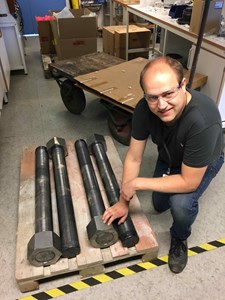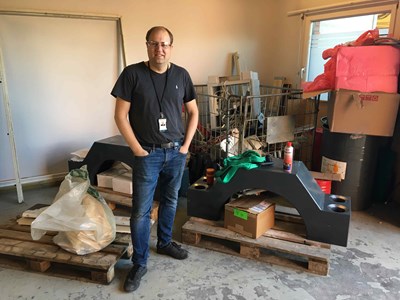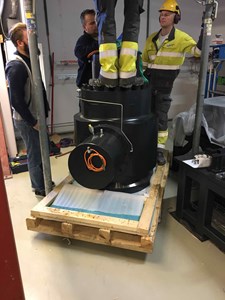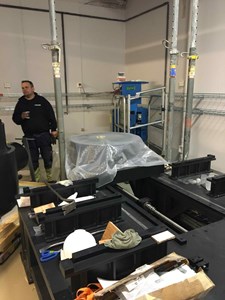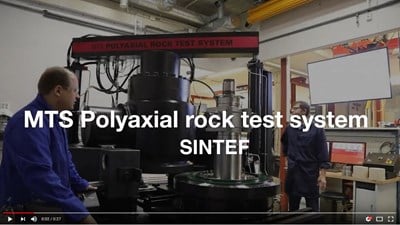

True triax
Contact person
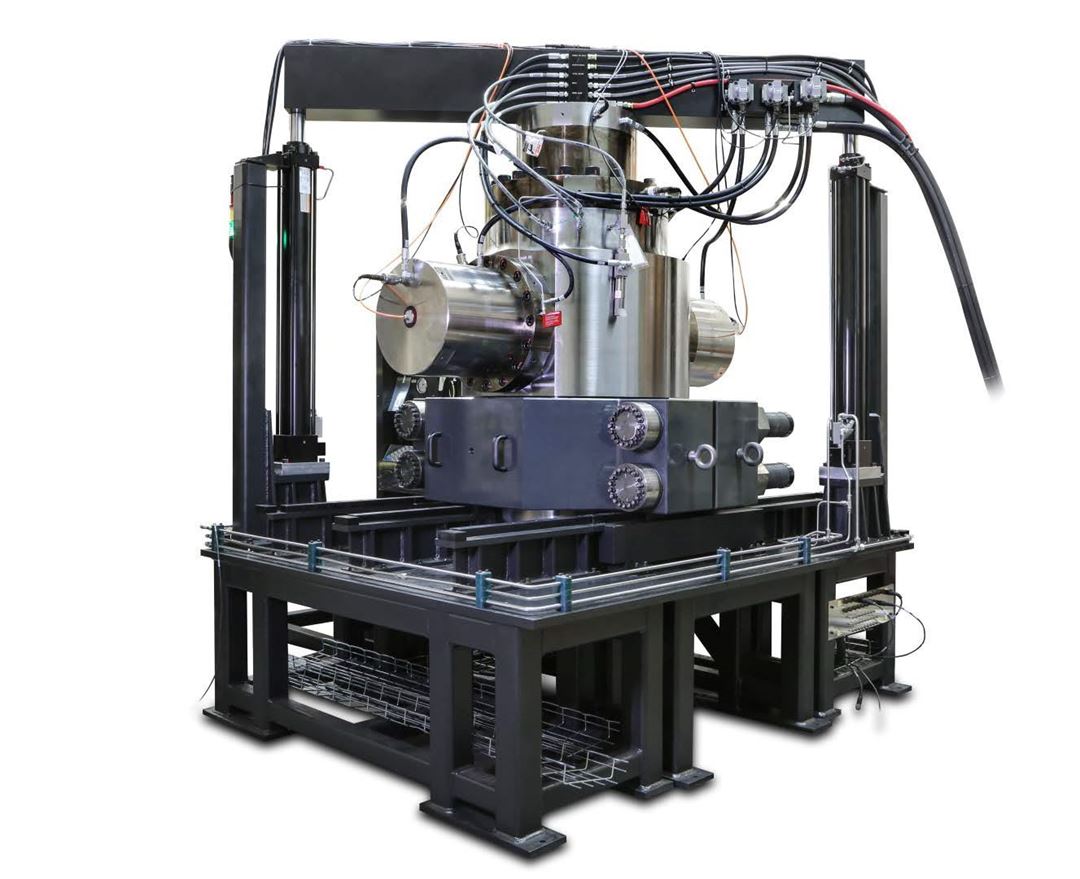
Specifications
- 100 MPa confining stress
- 50 MPa vertical deviatoric stress
- 50 MPa horizontal deviatoric stress
- Truncated samples, 200 mm diameter (and 400 mm diameter in biaxial mode)
- Hollow-cylinder tests
- Radial flow
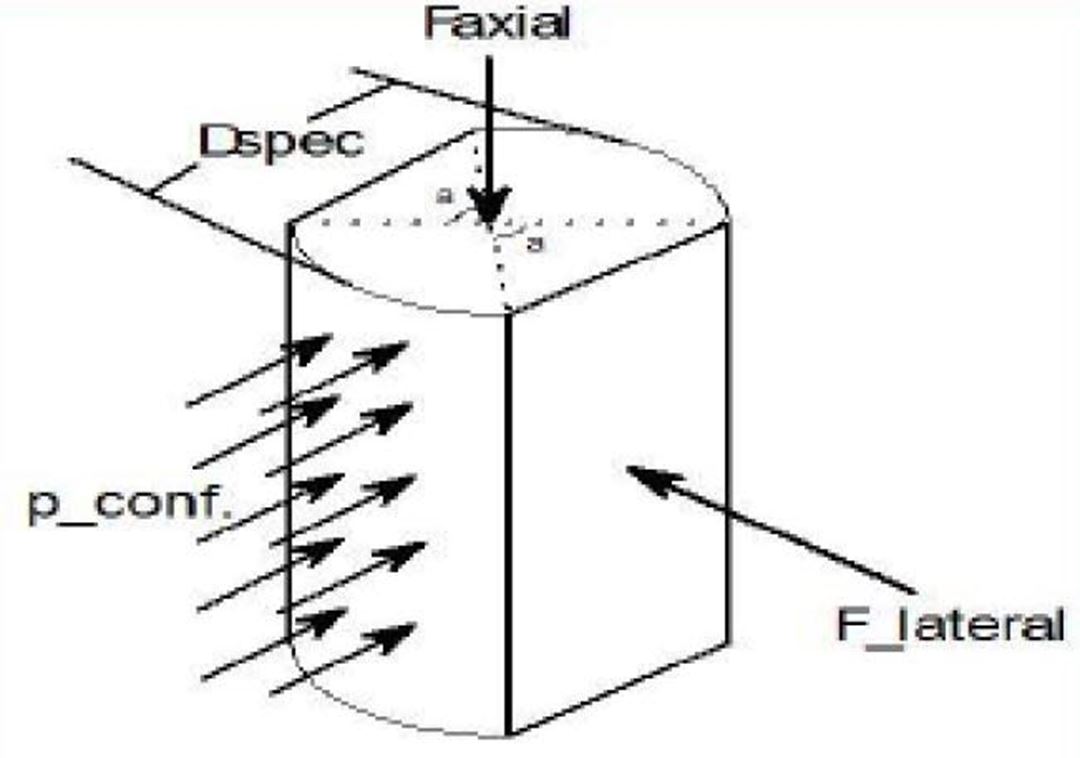
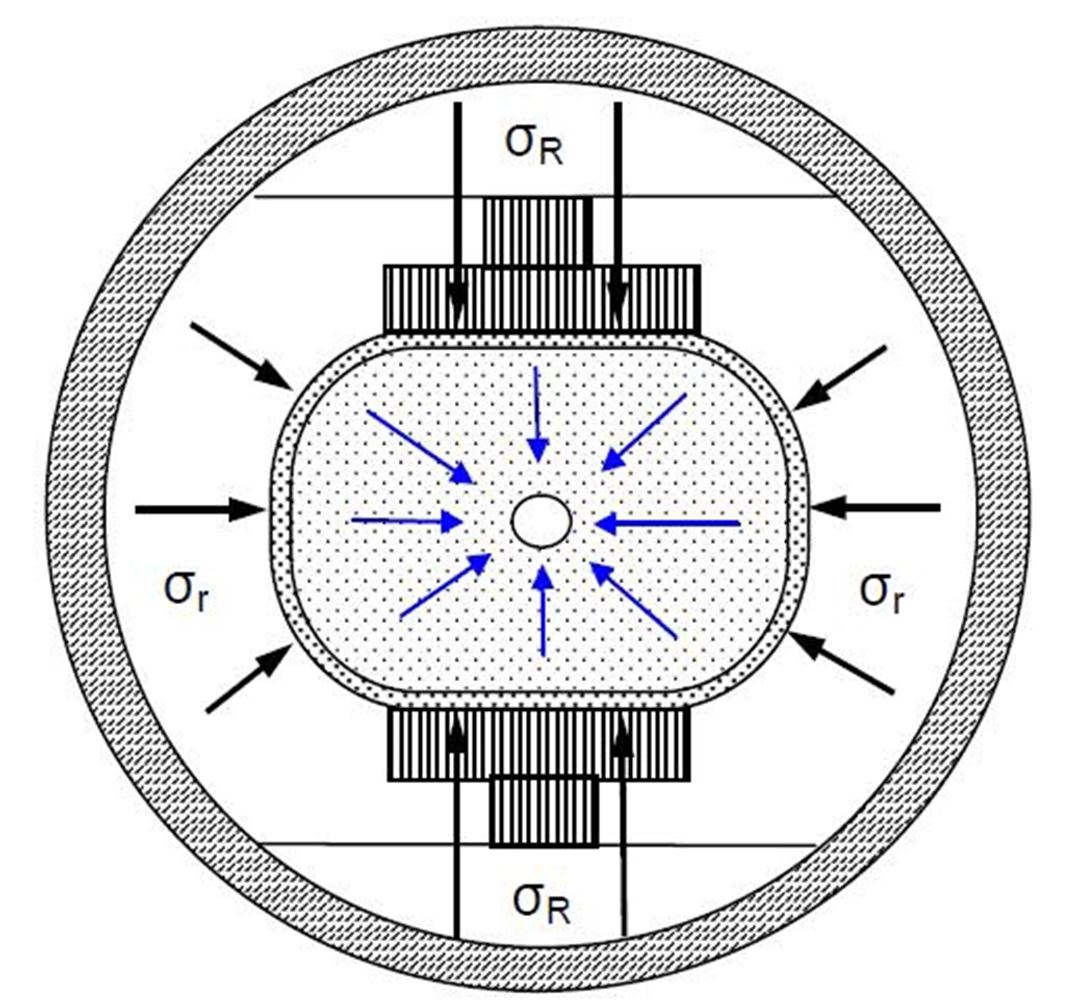
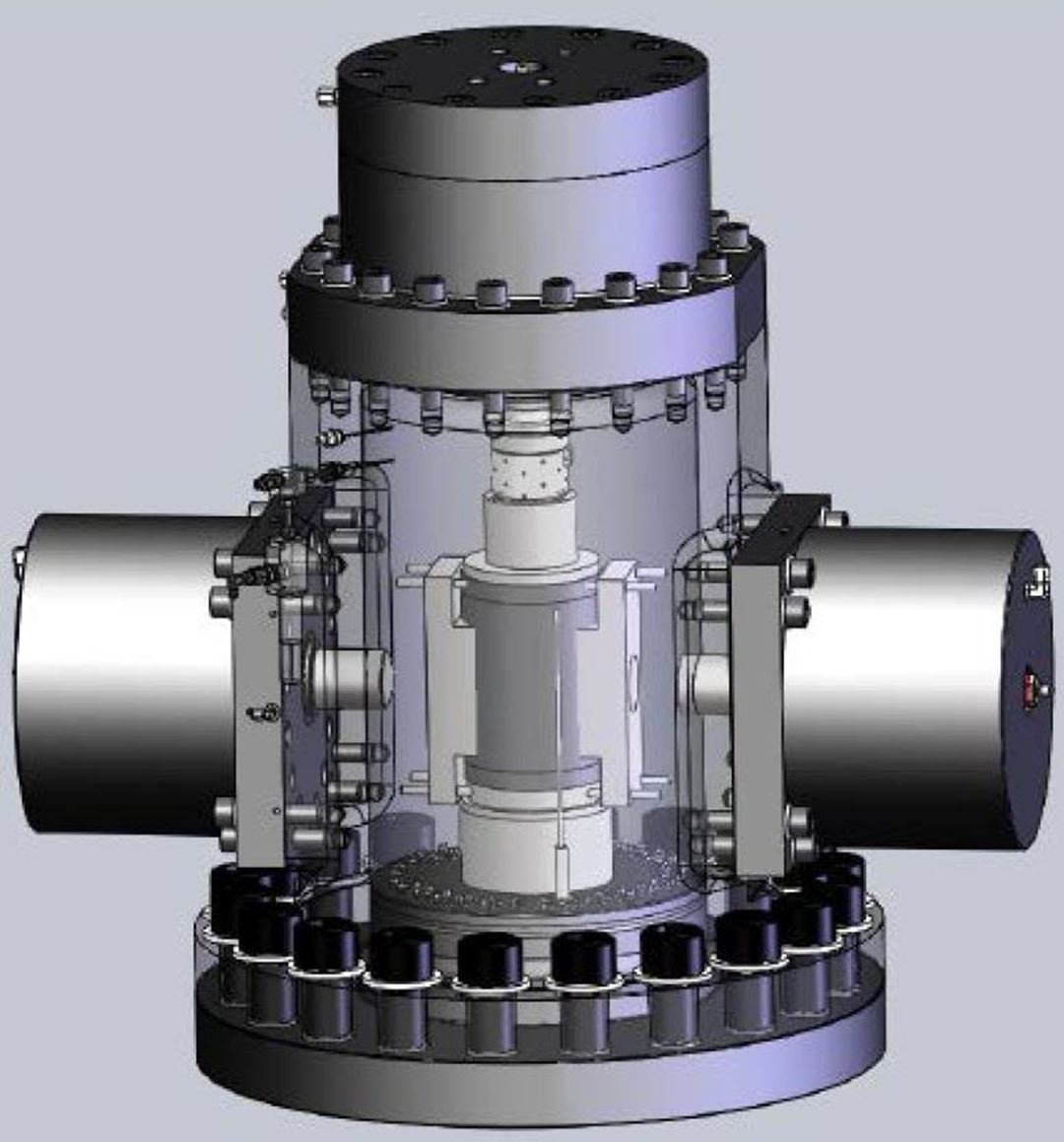
Specimens
Different geometry and sizes
Truncated samples (true triaxal-mode)
- 200 mm specimens
- 100 mm specimens
- 50 mm specimens
Round specimens (biaxial-mode)
- 400 mm specimens
Typical length to diameter ratio: 1:1
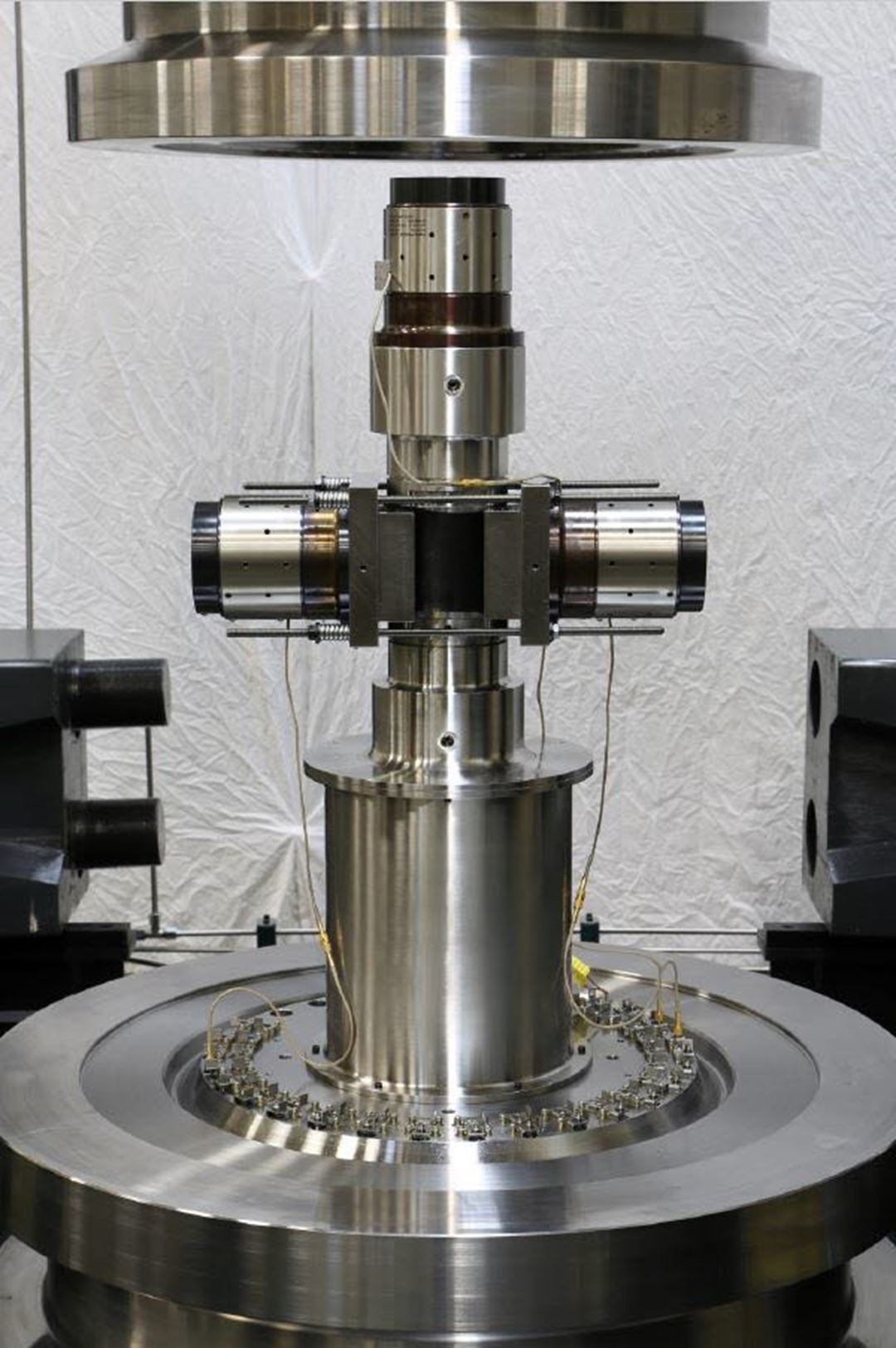
Areas of use
Sand production
the True Triaxial system will help refine sand prediction models to take into account field-relevant stress anisotropy around a well. This will improve the predictive accuracy of volumetric sand production models, helping operators optimize well productivity throughout its lifetime.
Borehole stability
The new system will allow for more realistic testing of overburden shale samples, especially targeting difficult deviated trajectories, where stress anisotropy has a large destabilizing effect. The interaction between stress anisotropy and fabric anisotropy will be studied in more detail.
Gas and oil shales
Testing will improve models of fracture productivity as a function of well orientation and stress.
Hydraulic fracturing (for larger samples, up to 400 mm)
The rig will permit more accurate hydraulic fracturing tests, used in biaxial mode on the largest samples to allow for longer fractures. Additionally, the effect of stress anisotropy on fracture topology can be studied on smaller samples.
Any other area where non-isotropic stress distribution is essential (i.e. most areas).
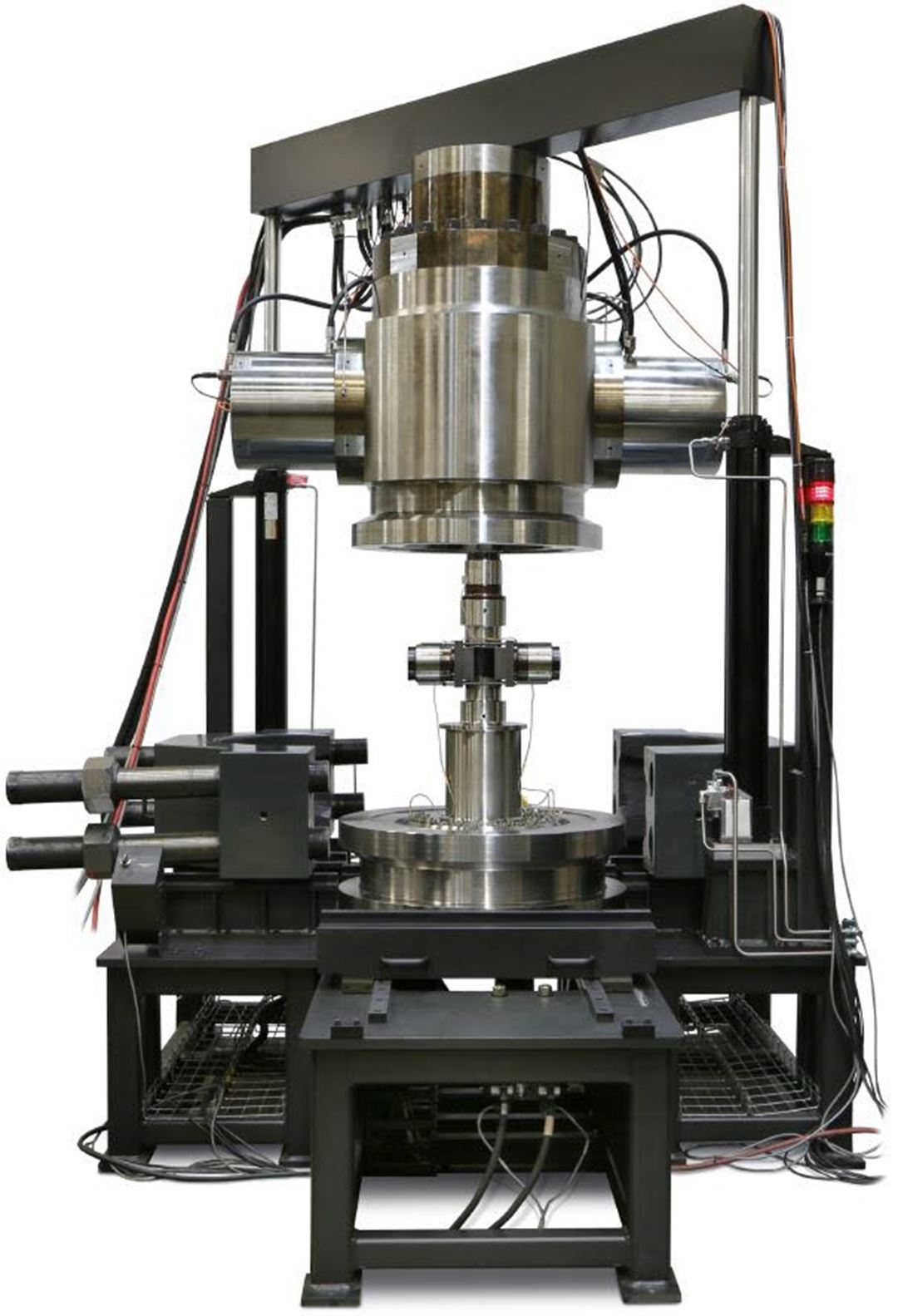
Pictures and video
Contact information
Postal address: P.O. Box 4763 Torgarden, NO-7465 Trondheim
Visiting address: S.P. Andersens vei 15 B, NO-7031 Trondheim
Phone: +47 464 17 000

